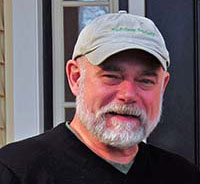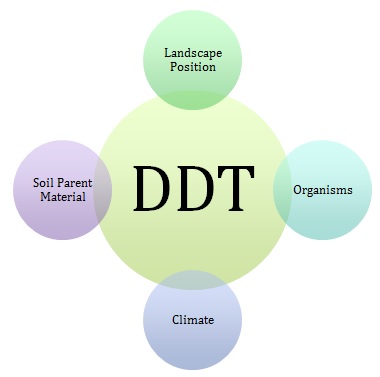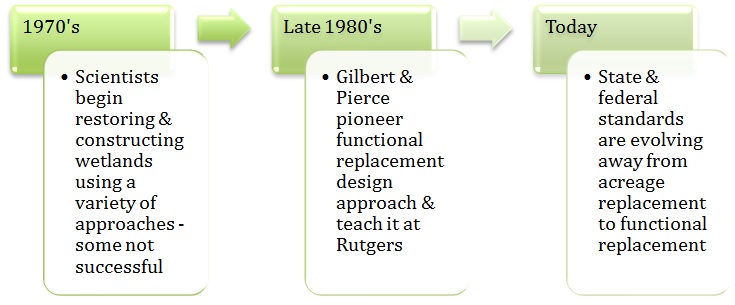Main Content
Functional wetland design involves understanding the DDT (depth, duration, and timing) of a wetland system.
Originally published September 4, 2013

The Wonders of Wetlands
Wetlands are essential components of our natural environment. They provide shoreline protection and nurseries for multiple freshwater and saltwater fishes, critical habitat for countless species of wildlife, storm water storage, nutrient filtration, sediment retention, niches that harbor unique species, and many other more subtle yet essential natural functions. Legions of biologists, ecologists, and other scientists have studied and cataloged these diverse systems for decades.
As the need to stem losses of these resources became more acute during the 1970s and 1980s, scientists endeavored to find ways in which degraded systems could be restored and new wetlands might be created. These efforts led to many potential approaches and a variety of successful and not so successful projects. A few experts began to recognize that the failed sites typically had not adequately addressed replacement of essential hydrologic functions.
Mal Gilbert: Evolution of a Wetland Restorer

While an employee of the USDA Soil Conservation Service from 1976 through 1990, Mal Gilbert became increasingly interested in restoration of wetland systems. He began to apply many of the principles he learned as a USDA Soil Scientist and Soil Conservationist to “wildlife habitat improvement” projects on landowners’ conservation plans, and he carried these techniques into the private sector as an environmental consultant.
Working with scientist and former Rutgers instructor, Dr. Gary Pierce, and others interested in wetland restoration, Mal began to realize that all natural wetland systems have very distinct patterns of wetness during the course of typical years. In essence, he recognized that each wetland type has a “hydrologic signature” which can be determined by calculating the depth, duration, and timing (DDT) of the water entering and leaving the wetland. Furthermore, Gilbert realized that successfully constructing a new wetland relied on identifying a reference wetland’s hydrologic signature and re-creating that signature (and, thereby, its functions) on the new site.
DDT: The Critical Driver of Any Wetland

Through discussions with Pierce, Mal realized that he was not alone in his observations. Pierce and Gilbert agreed that perhaps the most important feature that drives any wetland system is the DDT.
They recognized the importance of the landscape position of the wetland, the soil parent materials, climate, and, of course, the types of organisms in the wetland as critical factors as well, but realized that the distribution of water was at the heart of understanding the functions a particular wetland would be capable of performing.
A Wetland Restoration and Construction Training Program is Born
Dr. Pierce and Mal started teaching a suite of courses on wetland restoration and creation principles in 1988 for a number of venues including the Rutgers Office of Continuing Professional Education, the US Army Corps of Engineers, and others. They were the first to teach this topic with a functional design approach.
In 1993, Pierce published “Planning Hydrology for Constructed Wetlands” and he and Mal began using that publication as a centerpiece of their training courses. In 1999, Pierce and Gilbert began a rewrite of the 1993 effort and had a draft manuscript nearly complete at the time of Dr. Pierce’s passing in 2011. Mal has continued to teach wetland construction courses for Rutgers on his own since.
Functional Wetlands – Where We’re Headed

With the advent of revised wetland mitigation standards that focus on replacement of quantifiable wetland functions, the approach that Pierce and Gilbert developed both individually and then jointly in the late 1980’s has garnered growing support.
The State of New Jersey has incorporated many of the principles espoused by Pierce and Gilbert in New Jersey’s protocols for planning and development of wetland mitigation, creation, and restoration projects.
More recently, the Ohio Environmental Protection Agency (OPEA) has expressed interest in learning more about the protocols and approach that have been taught at Rutgers for more than twenty years. In fact, Mal has agreed to share information on successes and failures and to work with OEPA scientists as they develop their own set of standards and recommended procedures for wetland construction and restoration.
The first school to provide training opportunities in Gilbert and Pierce’s functional wetland design approach to construction and restoration, Rutgers is still one of only two universities where environmental professionals can learn this pioneering approach to wetland restoration.
Learn more about wetland construction by attending Rutgers’ Wetland Construction: Principles, Planning, and Design course!
Learn more about Rutgers’ Wetland Training!
Contact Suzanne Hills at 848-932-7234 or suzanne.hills@rutgers.edu.